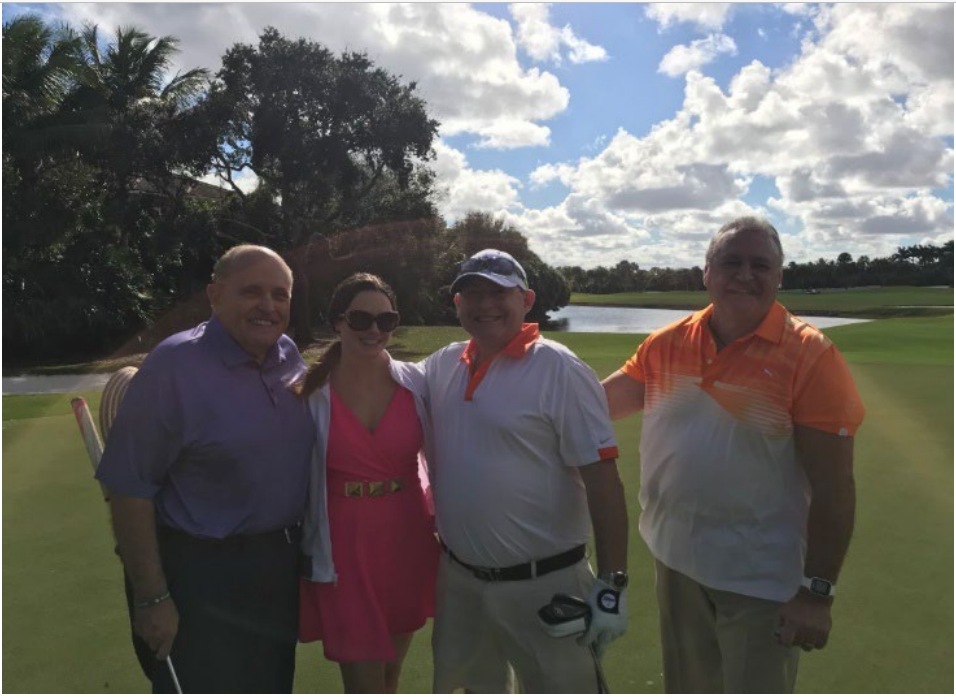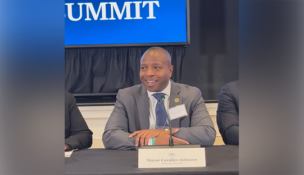Exhaustion clause held ambiguous
By: dmc-admin//November 3, 2004//
 |
|
“It is possible that reasonable people could differ as to the meaning of the phrase ‘that apply.’” Hon. Charles P. Dykman Concurring |
The Wisconsin Court of Appeals held on Oct. 28 that an insured’s judgment or settlement with a law firm for malpractice triggers the exhaustion requirement in an automobile policy’s UIM coverage.
Debra A. Degenhardt-Wallace and Derrick McCoy were involved in an auto accident on Jan. 5, 1999. Degenhardt-Wallace hired Attorney Ivars Kalnins to represent her in a lawsuit against McCoy; however Kalnins failed to file suit before the statute of limitations expired. As a result, Degenhardt-Wallace filed suit against Kalnins alleging legal malpractice.
At the time of the accident, McCoy was insured by State Farm Mutual Automobile Insurance Company, with bodily injury liability limits of $50,000. Degenhardt-Wallace also had a policy with State Farm with UIM benefits of $100,000.
Kalnins admitted liability for legal malpractice, but the parties disputed the amount of damages for which Kalnins may be liable. Kalnins has taken the position that he can be liable for no more than $50,000, the amount of McCoy’s underlying liability policy, because Degen-hardt-Wallace remains eligible for UIM benefits from State Farm for damages exceeding $50,000, as the statute of limitations has not yet run on the UIM claim.
State Farm moved to intervene, and the court granted the motion. Grant County Circuit Court Judge Michael T. Kirchman granted summary judgment in favor of State Farm, holding that the UIM coverage was not triggered by the settlement with Kalnins. Kalnins appealed, and the court of appeals reversed in a decision written by Judge Paul Higginbotham, and joined by Judge Margaret J. Vergeront. Judge Charles P. Dykman wrote separately in a concurring opinion.
The UIM policy provided, "There is no coverage until the limits of liability of all bodily injury liability bonds and policies that apply have been used up by payment of judgments or settlements."
The court concluded that the policy was ambiguous. The clause could merely set the point at which UIM coverage is triggered — after the insured has received the underlying liability policy limits, without saying anything about the source of those funds. It could also convey that a specific entity or individual must pay the limits.
The court found that, because the clause could be interpreted to not require a particular party to pay the limits, then it is ambiguous and must be construed against the insurer.
|
What the court held Case: Debra A. Degenhardt-Wallace v. Hoskins, Kalnins, McNamara & Day, No. 03-3091. Issue: Are payments from a legal malpractice insurer payments that trigger underinsured motorist coverage? Holding: Yes. Where the policy’s exhaustion clause refers to any policies "that apply," a settlement with a malpractice insurer triggers coverage, the same as a settlement with the negligent driver’s insurer. Counsel: Ward I. Richter, Madison; Sheila M. Sullivan, Madison, for appellant; William P. Skemp, La Crosse, for respondent. |
The court found, "The exhaustion clause in the insurance policy sets forth these requirements for UIM coverage: (1) the limits of liability (2) of all applicable bodily injury liability bonds or policies (3) must be used up (4) by payment of judgments or settlements. The phrase ‘limits of liability’ clearly refers to the total amount of liability coverage available under the tortfeasor’s bodily injury liability insurance policy."
The court found that the full $50,000 of McCoy’s policy limits must be "used up" or "exhausted," but that the clause only specifies the manner in which exhaustion is triggered. The court concluded, "nothing in this clause requires the limits of liability be ‘used up’ by receiving that amount under the bodily injury liability bond or policy.
Indeed, the exhaustion clause makes no reference to the source of the judgment or settlement funds."
Accordingly, the court reversed.
The Concurrence
Judge Dykman wrote a concurring opinion.
Dykman found, "The crux of the majority opinion is in par.15, where it concludes: ‘However, nothing in [the exhaustion clause] requires the limits of liability be "used up" by receiving that amount under the bodily injury liability bond or policy. Indeed, the exhaustion clause makes no reference to the source of the judgment or settlement funds.’"
Rejecting this conclusion, Dykman wrote, "This is not true. The source of the judgment or settlement funds must come from applicable bodily injury policies. The disputed sentence is written in the passive voice, but the operative words are: limits of applicable bodily injury policies are used up by payment or settlement. It is undisputed that malpractice insurance is not found in a bodily injury policy. Whether the limits of other policies are used up is irrelevant."
Nevertheless, Dykman did not dissent, but concurred, reasoning, "I do not know whether McCoy’s bodily injury policy is applicable because I am not sure of the meaning of the word ‘apply’ in the context of Degenhardt-Wallace’s policy with State Farm. The pertinent dictionary definition of ‘apply’ is: ‘to have relevance or a
valid connection.’ Merriam Webster’s Collegiate dictionary 57 (10th ed. 1993). If the question is whether Degenhardt-Wallace can recover money from McCoy or his insurance carrier, the answer is, No, McCoy’s policy does not have relevance or a valid connection; it does not apply. If the question is whether Degenhardt-Wallace could have recovered from McCoy or his insurer had she timely sued, the answer is, Yes, McCoy’s policy is applicable."
| |
||
|
Related Links Related Article |
||
| |
||
Dykman added, "Though I believe that ‘No’ is the better answer, it is possible that reasonable people could differ as to the meaning of the phrase ‘that apply.’ If McCoy’s policy is inapplicable because Degenhardt-Wallace can recover nothing from it, the policy does not ‘apply’ and UIM coverage exists. If McCoy’s policy applies because Degenhardt-Wallace could have recovered had she timely sued, the limits of McCoy’s policy have not been ‘used up,’ and UIM coverage does not exist. The disputed phrase is therefore ambiguous because it ‘is capable of being understood by reasonably well-informed persons in two or more senses.’ We are therefore to construe the sentence against State Farm. The result is UIM coverage exists, whether we accept the first meaning or conclude that the sentence is ambiguous (cites omitted)."
Dykman found further fault with the majority opinion, noting, "UIM coverage is designed to be coverage of last resort, but its context and design is limited to the interaction between two or more automobile liability policies. The designers of this coverage never contemplated more than the disputed policy provision provides."
Because Dykman agreed that the term "that apply" is ambiguous, however, he concurred with the majority that it must be construed against State Farm.
Click here for Case Analysis.
David Ziemer can be reached by email.
Legal News
- Giuliani, Meadows among 18 indicted in Arizona fake electors case
- Some State Bar diversity participants walk away from program
- Wisconsin court issues arrest warrant ‘in error’ for Minocqua Brewing owner
- Iranian nationals charged cyber campaign targeting U.S. Companies
- Facing mostly white juries, are Milwaukee County defendants of color truly judged by their peers?
- Milwaukee Mayor speaks in D.C. Tuesday at White House water summit
- Chicago man sentenced to prison after being caught with ‘Trump Gun’
- FTC bans non-competes
- Gov. Evers seeks applicants for Dane County Circuit Court
- Milwaukee man charged in dismemberment death pleads not guilty
- Democratic-led states lead ban on the book ban
- UW Madison Professor: America’s child care crisis is holding back moms without college degrees
WLJ People
- Power 30 Personal Injury Attorneys – Russell Nicolet
- Power 30 Personal Injury Attorneys – Benjamin Nicolet
- Power 30 Personal Injury Attorneys – Dustin T. Woehl
- Power 30 Personal Injury Attorneys – Katherine Metzger
- Power 30 Personal Injury Attorneys – Joseph Ryan
- Power 30 Personal Injury Attorneys – James M. Ryan
- Power 30 Personal Injury Attorneys – Dana Wachs
- Power 30 Personal Injury Attorneys – Mark L. Thomsen
- Power 30 Personal Injury Attorneys – Matthew Lein
- Power 30 Personal Injury Attorneys – Jeffrey A. Pitman
- Power 30 Personal Injury Attorneys – William Pemberton
- Power 30 Personal Injury Attorneys – Howard S. Sicula











